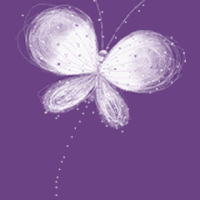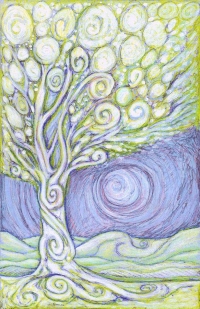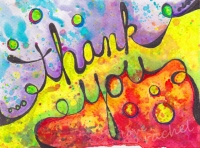Release
Blanket Forgiveness
Blanket forgiveness is an awesome instant healing technique that uses both touch and words. It is awesome because it works so quickly and it is awesome because you don’t even have to know whom you are forgiving for it to work.
It is based on an assumption that any physical condition involving swelling or infection also contains an emotional component of repressed anger or guilt. Notice that I didn’t say it was caused by emotions, just that it can be useful to assume that emotions are involved in causing at least some of the stress that is maintaining or aggravating the condition. If you can relieve the emotional tension, it will help the body heal more quickly.
The actual technique is very simple:
With your hand or fingers, you lightly touch the area that needs healing while at the same time you repeat the words, “whatever this is related to, I forgive it completely,” for as long as you can or until you get some relief. It’s likely that you’ll feel various physical sensations as you do this, such as tingling or movement or relaxation, and maybe even pain relief.
The more that anger or guilt is connected with the condition, the more quickly and dramatically you will experience healing effects. Even if angry emotions are only a small part of the malady, there will be some degree of benefit.
As I said, you don’t have to know consciously who or what the emotions are directed at. Just holding the idea of forgiveness while touching the infected or swollen area is enough to cause subconscious changes that will ease a lot of stress. The touch itself provides a certain amount of energy as well as helping to keep your mind focused on forgiving.
Note: It’s also very helpful to not just say the words but to experience them as well. What does forgiveness feel like? How does it sound? Is there a flavor? A color? A scent?
Of course, if you do know who or what you are resenting or feeling guilty about, that’s even better. Especially if you can make a breakthrough and are able to totally forgive and release it.
From: Instant Healing by Serge Kahili King
Try This Hawaiian Healing Technique
“Two years ago, I heard about a therapist in Hawaii who cured a complete ward of criminally insane patients–without ever seeing any of them.
The psychologist would study an inmate’s chart and then look within himself to see how he created that person’s illness. As he improved himself, the patient improved.
“When I first heard this story, I thought it was an urban legend. How could anyone heal anyone else by healing himself? How could even the best self-improvement master cure the criminally insane? It didn’t make any sense. It wasn’t logical, so I dismissed the story.
“However, I heard it again a year later. I heard that the therapist had used a Hawaiian healing process called ho ‘oponopono. I had never heard of it, yet I couldn’t let it leave my mind. If the story was at all true, I had to know more.
I had always understood “total responsibility” to mean that I am responsible for what I think and do. Beyond that, it’s out of my hands. I think that most people think of total responsibility that way. We’re responsible for what we do, not what anyone else does–but that’s wrong.
“The Hawaiian therapist who healed those mentally ill people would teach me an advanced new perspective about total responsibility. His name is Dr. Ihaleakala Hew Len. We probably spent an hour talking on our first phone call. I asked him to tell me the complete story of his work as a therapist.
He explained that he worked at Hawaii State Hospital for four years. That ward where they kept the criminally insane was dangerous. Psychologists quit on a monthly basis. The staff called in sick a lot or simply quit. People would walk through that ward with their backs against the wall, afraid of being attacked by patients. It was not a pleasant place to live, work, or visit.
“Dr. Len told me that he never saw patients. He agreed to have an office and to review their files. While he looked at those files, he would work on himself. As he worked on himself, patients began to heal.
“‘After a few months, patients that had to be shackled were being allowed to walk freely,’ he told me. ‘Others who had to be heavily medicated were getting off their medications. And those who had no chance of ever being released were being freed.’ I was in awe.
‘Not only that,’ he went on, ‘but the staff began to enjoy coming to work. Absenteeism and turnover disappeared. We ended up with more staff than we needed because patients were being released, and all the staff was showing up to work. Today, that ward is closed.’
“This is where I had to ask the million dollar question: ‘What were you doing within yourself that caused those people to change?’
“‘I was simply healing the part of me that created them,’ he said. I didn’t understand. Dr. Len explained that total responsibility for your life means that everything in your life- simply because it is in your life–is your responsibility. In a literal sense the entire world is your creation.
“Whew. This is tough to swallow. Being responsible for what I say or do is one thing. Being responsible for what everyone in my life says or does is quite another. Yet, the truth is this: if you take complete responsibility for your life, then everything you see, hear, taste, touch, or in any way experience is your responsibility because it is in your life.
“This means that terrorist activity, the president, the economy or anything you experience and don’t like–is up for you to heal. They don’t exist, in a manner of speaking, except as projections from inside you. The problem isn’t with them, it’s with you, and to change them, you have to change you.
“I know this is tough to grasp, let alone accept or actually live. Blame is far easier than total responsibility, but as I spoke with Dr. Len, I began to realize that healing for him and in ho ‘oponopono means loving yourself.
“If you want to improve your life, you have to heal your life. If you want to cure anyone, even a mentally ill criminal you do it by healing you.
I asked Dr. Len how he went about healing himself. What was he doing, exactly, when he looked at those patients’ files?
“‘I just kept saying, ‘I’m sorry’ and ‘I love you’ over and over again,’ he explained.
“That’s it?”
“That’s it.”
“Turns out that loving yourself is the greatest way to improve yourself, and as you improve yourself, you improve your world.
“Let me give you a quick example of how this works: one day, someone sent me an email that upset me. In the past I would have handled it by working on my emotional hot buttons or by trying to reason with the person who sent the nasty message.
“This time, I decided to try Dr. Len’s method. I kept silently saying, I’m sorry’ and ‘I love you,’ I didn’t say it to anyone in particular. I was simply evoking the spirit of love to heal within me what was creating the outer circumstance.
“Within an hour I got an e-mail from the same person. He apologized for his previous message. Keep in mind that I didn’t take any outward action to get that apology. I didn’t even write him back. Yet, by saying ‘I love you,’ I somehow healed within me what was creating him.
“I later attended a ho ‘oponopono workshop run by Dr. Len. He’s now 70 years old, considered a grandfatherly shaman, and is somewhat reclusive. He praised my book, The Attractor Factor. He told me that as I improve myself, my book’s vibration will raise, and everyone will feel it when they read it. In short, as I improve, my readers will improve.
“‘What about the books that are already sold and out there?’ I asked.
“‘They aren’t out there,’ he explained, once again blowing my mind with his mystic wisdom. ‘They are still in you.’ In short, there is no out there. It would take a whole book to explain this advanced technique with the depth it deserves.
“Suffice It to say that whenever you want to improve anything in your life, there’s only one place to look: inside you. When you look, do it with love.”
It’s the attraction factor – like attracts like – his God-self was so strong that it attracted the God-self in others.”
Article by: Joe Vitale
Sounds That Cleanse and Release
In Mitchell L. Gaynor, M.D.’s book, ‘The Healing Power of Sound’, he discusses specific toning exercise. He states:
“Moaning and groaning are cleansing sounds that come naturally when aches and pains are being released. High-pitched, penetrating sounds, or even fierce screaming can help break up energy blockages that may have led to emotional and physical armoring.
“Release the sound that you feel from within.
“It may be a bloodcurdling, terrifying scream that could go on for several minutes, until it may actually end in laughter. Releasing a scream that has been held in for decades can be a joyous, liberating experience.”
I know this works. If you find it difficult to let out a bloodcurdling scream, how about a fierce roar?
Source: Balanced Woman’s Blog





